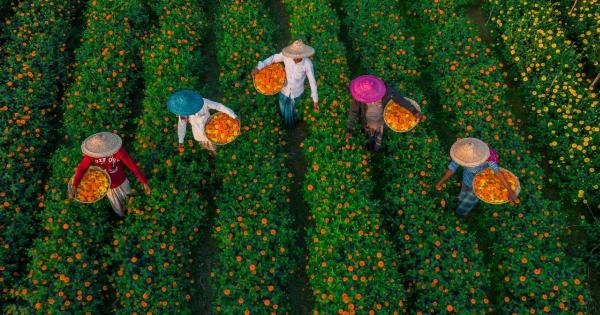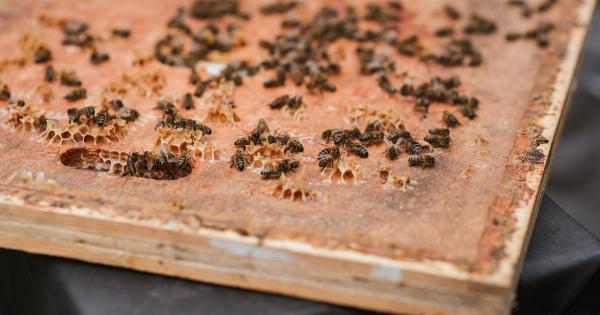Hunger continues to be a prevalent issue in many parts of the world, affecting millions of lives.
While various initiatives and interventions have been undertaken to address the problem, there is one innovative solution that holds immense potential in combating both hunger and malnutrition: Golden Rice.
What is Golden Rice?
Golden Rice is a genetically modified rice variety that has been engineered to contain beta-carotene, a precursor of vitamin A.
Vitamin A deficiency is a major public health concern, particularly in developing countries where diets often lack this crucial nutrient. By enhancing the nutritional content of rice, Golden Rice aims to significantly improve the dietary intake of vitamin A, offering a sustainable solution to tackle malnutrition and related health issues.
Development of Golden Rice
The development of Golden Rice began in the late 1990s when scientists Ingo Potrykus and Peter Beyer aimed to address the lack of vitamin A in diets of communities heavily reliant on rice as a staple food.
Through genetic engineering techniques, they successfully introduced genes from daffodils and bacteria into the rice genome, enabling it to produce beta-carotene.
Benefits of Golden Rice
The introduction of Golden Rice brings forth several potential benefits:.
1. Combating Vitamin A Deficiency
Vitamin A deficiency leads to a range of health problems, including impaired vision, weakened immune system, and higher susceptibility to infections. It predominantly affects children and pregnant women, causing irreversible damage and even blindness.
Golden Rice provides a bioavailable source of beta-carotene that can be metabolized into vitamin A, thus addressing this nutritional deficiency.
2. Improved Nutrition and Health Outcomes
Access to Golden Rice can potentially improve the nutritional status of vulnerable populations.
By increasing the availability of vitamin A, this genetically modified rice variety can contribute to enhanced health outcomes, reducing the prevalence of vitamin A deficiency-related diseases and mortality.
3. Sustainable Solution
Golden Rice offers a sustainable solution to address malnutrition. By incorporating beta-carotene in rice, a staple crop widely cultivated and consumed across the globe, this genetically modified variety has the potential to reach millions of people.
Its integration into existing agricultural practices allows for widespread adoption without major disruptions in food production or consumption patterns.
Controversies Surrounding Golden Rice
Despite its potential benefits, Golden Rice has faced significant controversies and opposition from various stakeholders:.
1. GMO Debate
Golden Rice falls under the category of genetically modified organisms (GMOs), which have been a subject of heated debate worldwide.
Critics argue that the long-term health and environmental impacts of GMOs are not yet fully understood and raise concerns regarding unintended consequences and potential risks associated with their consumption.
2. Intellectual Property Rights
Golden Rice has been patented by the institutions involved in its development, sparking concerns about intellectual property rights.
Detractors argue that such monopolization of genetic resources can hamper access and availability, particularly for small-scale farmers who heavily rely on traditional seed-saving practices.
3. Ethical Considerations
Genetic engineering of crops raises ethical questions about playing with nature and the potential for unintended consequences.
Critics argue that tampering with the genetic makeup of food crops may have unforeseen effects on biodiversity and ecological systems.
Future Prospects of Golden Rice
Despite the controversies, Golden Rice continues to hold promise as a valuable tool in the fight against hunger and malnutrition:.
1. Regulatory Approvals
Golden Rice has received regulatory approvals in several countries for field trials and commercialization. This progress signifies growing acceptance and recognition of its potential benefits in addressing nutritional deficiencies.
2. Public-Private Partnerships
The development and promotion of Golden Rice involve collaborations between various stakeholders.
Public-private partnerships have been formed to accelerate research, enhance public awareness, and ensure equitable access to this genetically modified rice variety.
3. Technological Advancements
Advancements in genetic engineering techniques and biotechnology hold promise for further improvements in Golden Rice and other genetically modified crops.
Ongoing research seeks to enhance the efficiency, nutritional content, and agronomic traits of Golden Rice, making it an even more effective weapon against hunger.
Conclusion
Golden Rice has emerged as a potentially groundbreaking solution in the battle against hunger and malnutrition.
By addressing vitamin A deficiency, this genetically modified rice can significantly improve the nutrition and health outcomes of vulnerable populations worldwide. However, controversies surrounding GMOs, intellectual property rights, and ethical concerns highlight the need for comprehensive evaluation and transparent dialogue.
With continued research, regulatory approvals, and public-private collaborations, Golden Rice holds the key to a brighter future, providing a sustainable and accessible solution to ending hunger.































